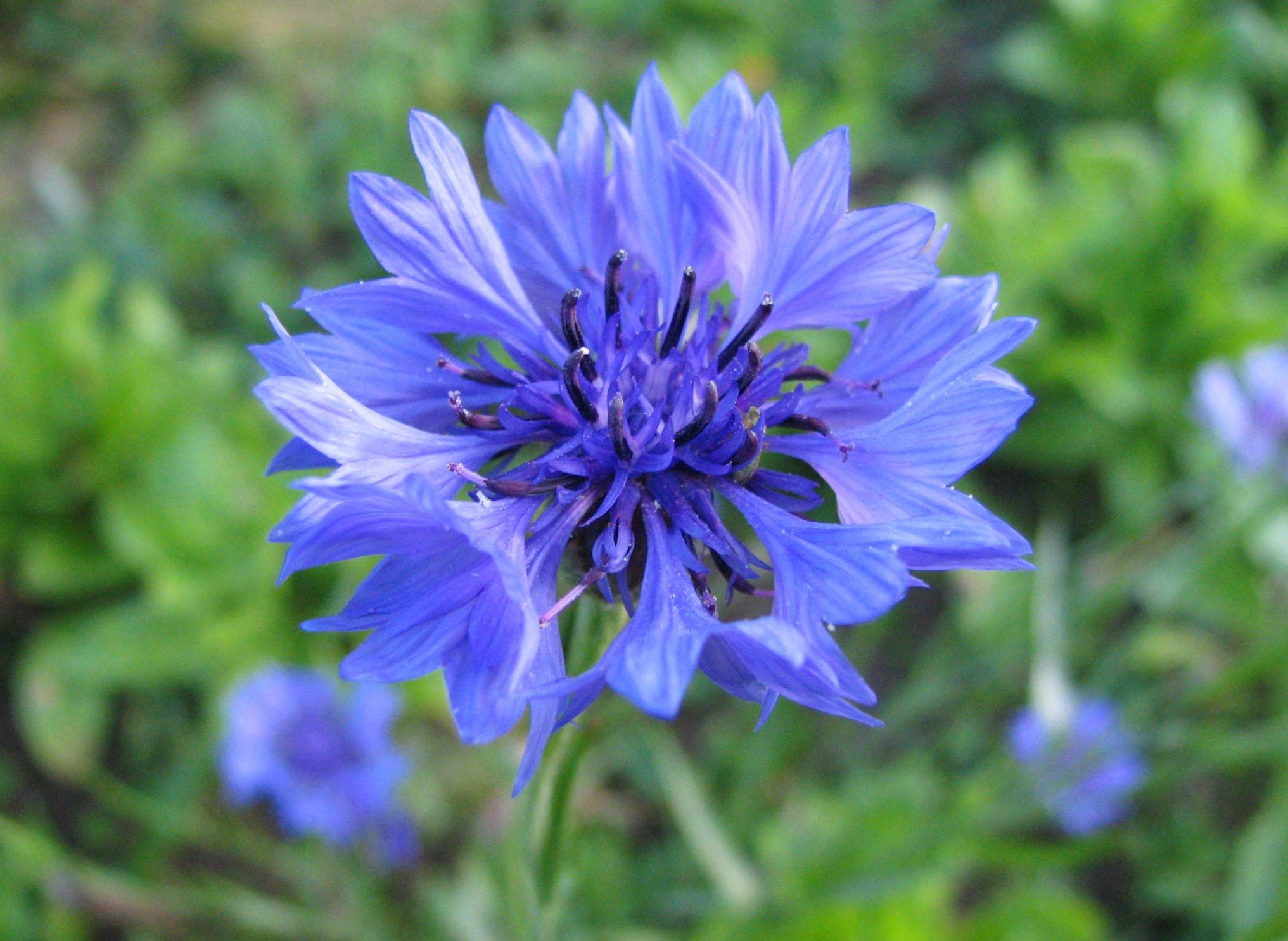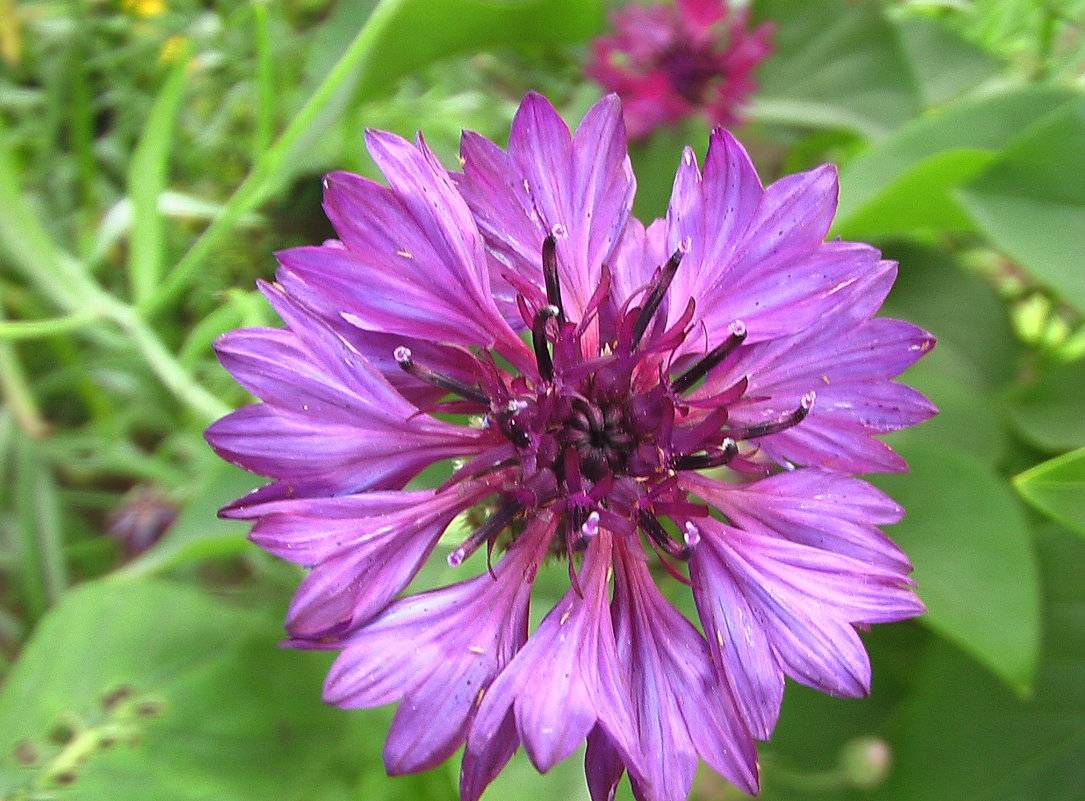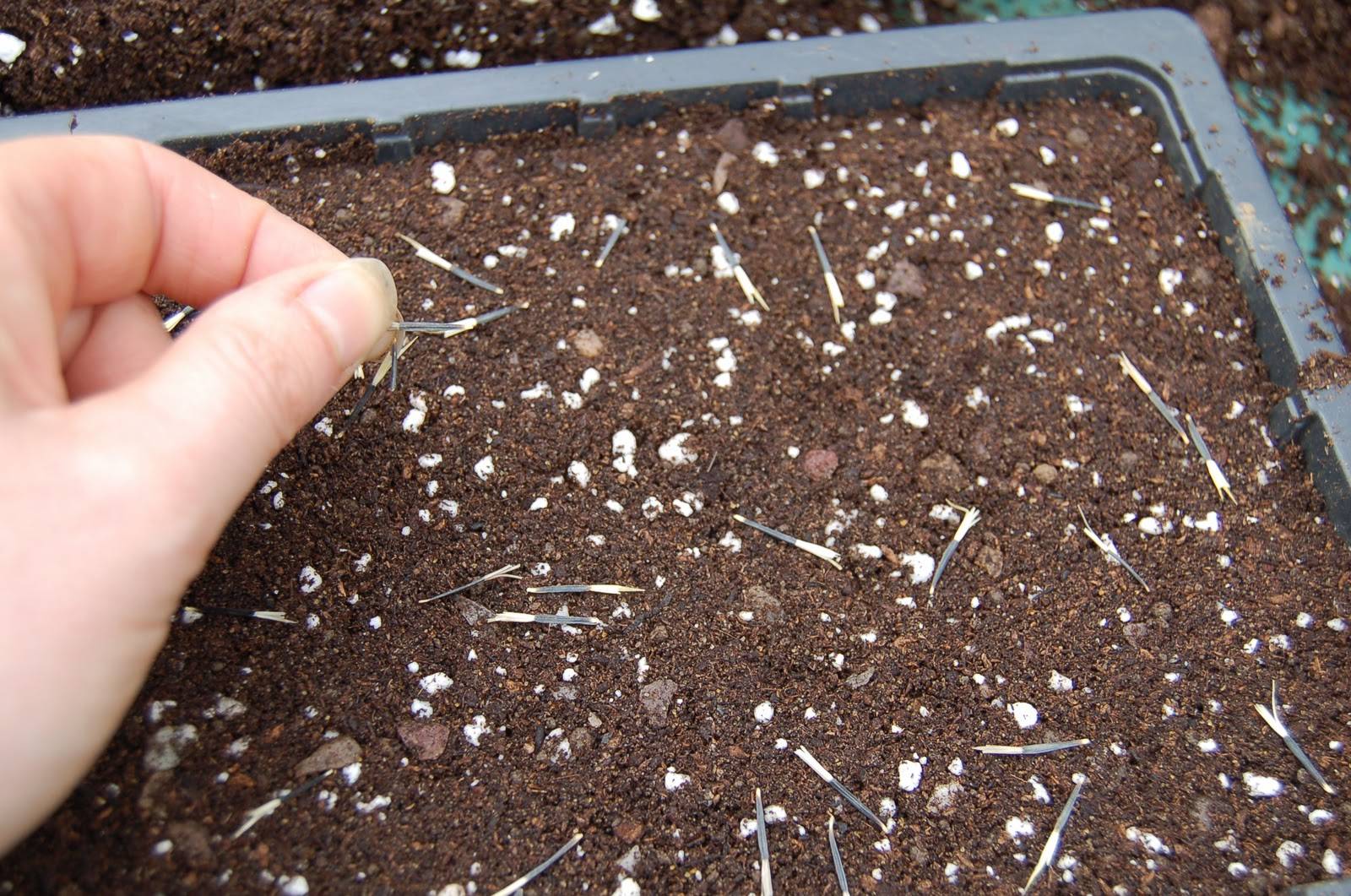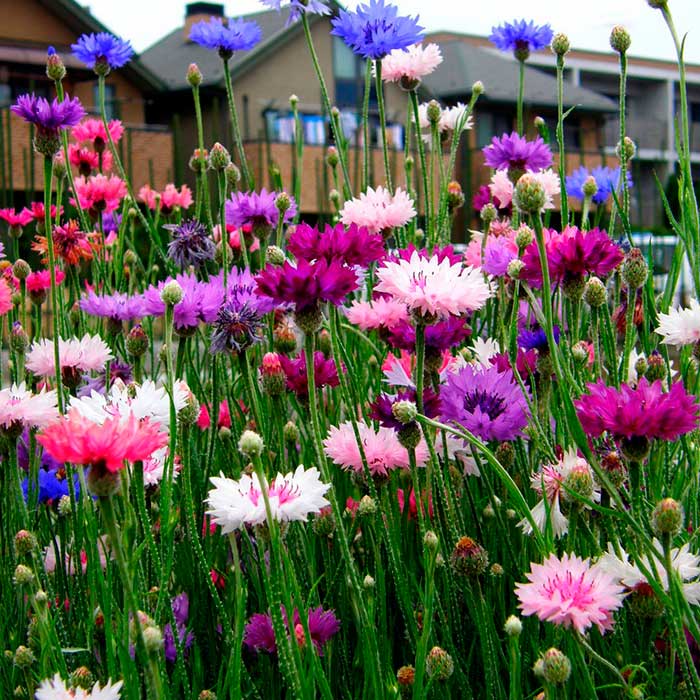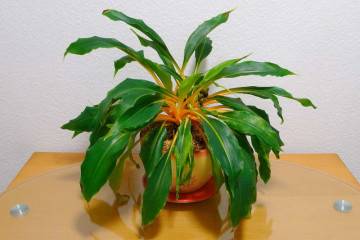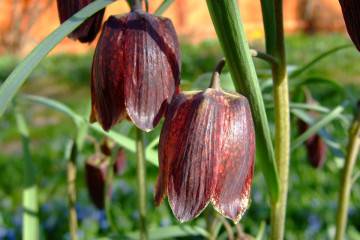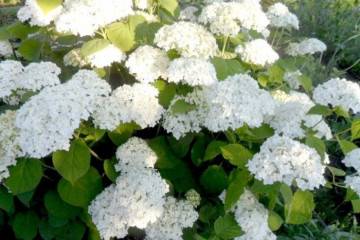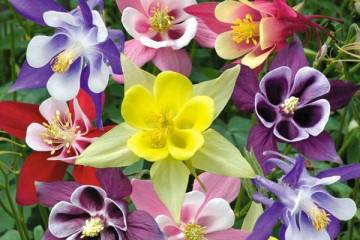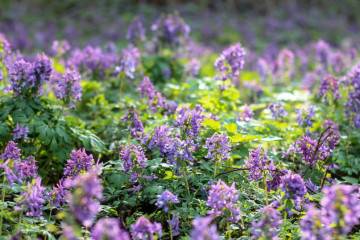Cornflower flower
Content:
A herbaceous annual or perennial with delicate flowers, belonging to the Astrov family, is called a cornflower. The homeland of the plant is Southern Europe, but it is known to almost everyone and grows wherever there is a temperate climate. Currently, a huge number of species and varieties of this plant have been bred by breeders. They are used to decorate various territories.
The origin and appearance of cornflowers
K. Linnaeus gave the cornflower the Latin name “Centaurea”, which translates as “stabbing bull” or “centaur flower”. This is due to the legend about the origin of this plant. Cornflower is a flower that has several beautiful legends of its origin, but the most common is the one that tells how the centaur Chiron, wounded by the famous Hercules, was healed with its help.
There is another Slavic origin legend. It tells about the story of a guy Vasily, who worked on arable land. It was at this work that the mermaid saw him, who at first sight fell in love with him. One fine day, after work, the guy went to the river to wash and saw a mermaid in all its glory. The love of young people turned out to be mutual, but they could not choose a future place to live together. Each stood his ground and then the mermaid in despair, hoping that the rain would bring him to the river, turned Basil into a flower. However, even after that, the plant did not stop clinging to the fertile soil with its strong roots.
The Slavs have known about the healing power of cornflower since ancient times. They used the plant as a medicinal remedy for a number of diseases.
Description of the cornflower flower
Cornflower is an excellent meadow plant with a rough stem and powerful taproot. The leaves of the plant are elongated lanceolate. The flowers are bright, they are collected in large single baskets. On one branch, as a rule, there are several buds.
Shades range from white to pale pink, as well as bright blue and end in purple. The cornflower blooms throughout the summer. After flowering, it begins to bear fruit - a fruit is formed on it - an achene.
What does a cornflower garden flower look like?
Despite the huge variety of species, most flowers share common features. The plant stands out with erect branching stems with leaves alternately located on them.
How exactly a flower looks depends entirely on its variety and place of growth. For example, mountain species are distinguished by a more saturated color compared to meadow and field varieties. This is explained by the fact that such cornflowers flowers fade in the sun.
Types and varieties
Currently, there are about 500 varieties of this ornamental plant, both annual and perennial, in the world. The most common are the following.
Field cornflower
This variety is widely used in scientific and folk medicine.Field cornflower, due to the fact that it is rich in substances that enhance urine flow and sweating, is used as a diaphoretic and diuretic.
It will not be difficult to prepare plant raw materials, since this species grows among crops in meadows and fields.
Its stem is thin, erect and prone to lodging. Cornflowers as wildflowers come in a blue hue that can range from deep blue to purple. Leaves are gray-green. Inflorescences are collected in single baskets.
Yellow
A perennial plant that grows up to 100 cm in height. Flowers of a yellow cornflower with a diameter of up to 5 cm of bright color. Leaves are formed on straight and thick stems, oblong-lanceolate.
White
The flower reaches a height of 30 cm. This variety is listed because of its uniqueness in the Red Book. White cornflowers are almost impossible to find on the street. They are mainly planted in scientific botanical institutes or botanical gardens. The flower is distinguished by small baskets and a white shade of flowers.
Pink
Almost every gardener in the garden or on the backyard can find pink cornflowers. The plant is distinguished by small single inflorescences and grows up to 1 m in height. The flower has a pink tint. The variety blooms from mid-summer to late autumn. The stems of the plant are erect, the leaves are light green.
Oriental
Perennial plant with a height of 80 to 130 cm. Leaves are formed on long petioles. Yellow flowers are collected in a basket inflorescence. Eastern cornflowers are wild flowers. The leaves of the plant are pinnately dissected, and the flowers are predominantly bright yellow.
Purple
The flower is distinguished by a thin and rod stem. In height, purple cornflowers reach 80 cm.The leaves are obovate-lanceolate. Flowers from lilac to lilac-purple hue. Perennial blooms from early summer to September. After flowering, fruits are formed on the stem. The plant propagates by seeds.
In addition to the varieties listed above, there are many more varieties that are striking in their appearance. For example, such as Krasny ball, mountain, whitewashed, musky, etc. Which one to grow in his garden, each grower decides independently.
What you need to plant cornflowers
Every florist, despite the variety, knows what cornflowers look like. This perennial and annual ornamental plant is found in various shades. The flower is very beautiful and unpretentious, therefore it is often he who is preferred and recognized by gardeners.
The flower of children attracts attention. Often, parents notice how a child draws in his coloring blue, purple, white and yellow flowers, similar to daisies. Many children, signing their drawings, ask their parents how their name is spelled correctly - cornflower or cornflower. For the child to remember, it is recommended to tell the legend about the young guy Vasily. After that, children will not only be able to draw a plant, but also sign it correctly.
Perennial flower varieties reproduce in two ways:
- seeds;
- dividing adult bushes.
It is more convenient to grow both annual and perennial plants from seeds. You can sow them directly into the open ground, and if you plan to decorate the veranda or balconies, then it is best to do it in containers. When planning the cultivation of cornflowers, it is recommended to prepare the soil for planting in mid-April.At this time, the soil is dug up and loosened. In this case, it is best to give preference to non-acidic soil. Experts say that these flowers grow better in calcareous soils. In this case, the brightness of the petals is observed.
Choosing the best place
Cornflowers are plants that are very light-loving, so you should choose flat, not shaded places for growing them. Planting flowers close to each other is not recommended, as they will shade each other and grow poorly. Depending on the variety, the best option would be to leave a distance of 15 to 50 cm between the bushes.
Step-by-step planting process
Cornflowers are flowers that practically do not need a description, since they are known to almost everyone. But at the same time, not everyone has an idea of how to grow them correctly. Seeds of all types of cornflowers do not need additional processing. The only exceptions are the field and Fischer's cornflower. These seeds need mandatory stratification, otherwise they simply will not sprout. The procedure involves placing the seeds in plastic bags and placing them in the refrigerator. The top shelf is best suited for this, where the temperature ranges from 1 ° C to 5 ° C. The seeds should be kept in the refrigerator for 1 to 2 months. After that, they are planted in the ground.
To plant a plant, follow these steps:
- Flower beds should be formed in April-May.
- After digging up the soil and leveling, grooves are formed with a depth of 2 to 3 cm.
- Then the soil is moistened and seeds are planted in it. When planting, the distance between them should be from 5 to 10 cm.
- From above, they are sprinkled with sifted soil, and the areas are covered with a special cloth.
- Watering is carried out every two days.
- Seedlings will begin to appear after two weeks. At this time, it is necessary to remove the covering material from the beds, and after a few days, thin out the shoots so that the distance between the plants is from 15 to 20 cm.
Caring for garden cornflowers
Regardless of what kind of cornflowers are grown on the site, it is easy to care for them. Cornflowers of the Astrov family perfectly adapt to any climatic conditions and feel good both in the wild and in the home garden. The plant is classified as frost-resistant, so winter is not at all terrible for him. The flower is not susceptible to diseases and pests. At the same time, in order to prolong its life and enjoy the abundant flowering as long as possible, care is essential.
Watering mode
Common garden cornflowers, just like other varieties, need moderate watering. Moisten the soil as it dries. With excessive moisture, the roots can become soaked and, accordingly, the death of the flower.
Top dressing
In order for a flower to bloom profusely and delight the eye with large buds, it must be systematically fed. This should be done every two to three weeks. For this, mineral fertilizers are suitable. Pre-winter feeding should not be ignored, as it will provide perennial bushes with a good wintering.
Attractive and at the same time modest cornflowers have inspired poets, artists and designers for a long time. It was this flower that pushed manufacturers to create high-strength rip-foot fabric, which looks like flax, depending on the composition. It is used to sew high-quality “Cornflower” color jackets, which at the same time have waterproof properties. Such fabric is used for sewing flight parachutes, overalls, body armor, flags and banners.
But cornflowers are very popular among flower growers. They are grown both to decorate home and botanical gardens. They are simple to care for, and bloom all summer.


